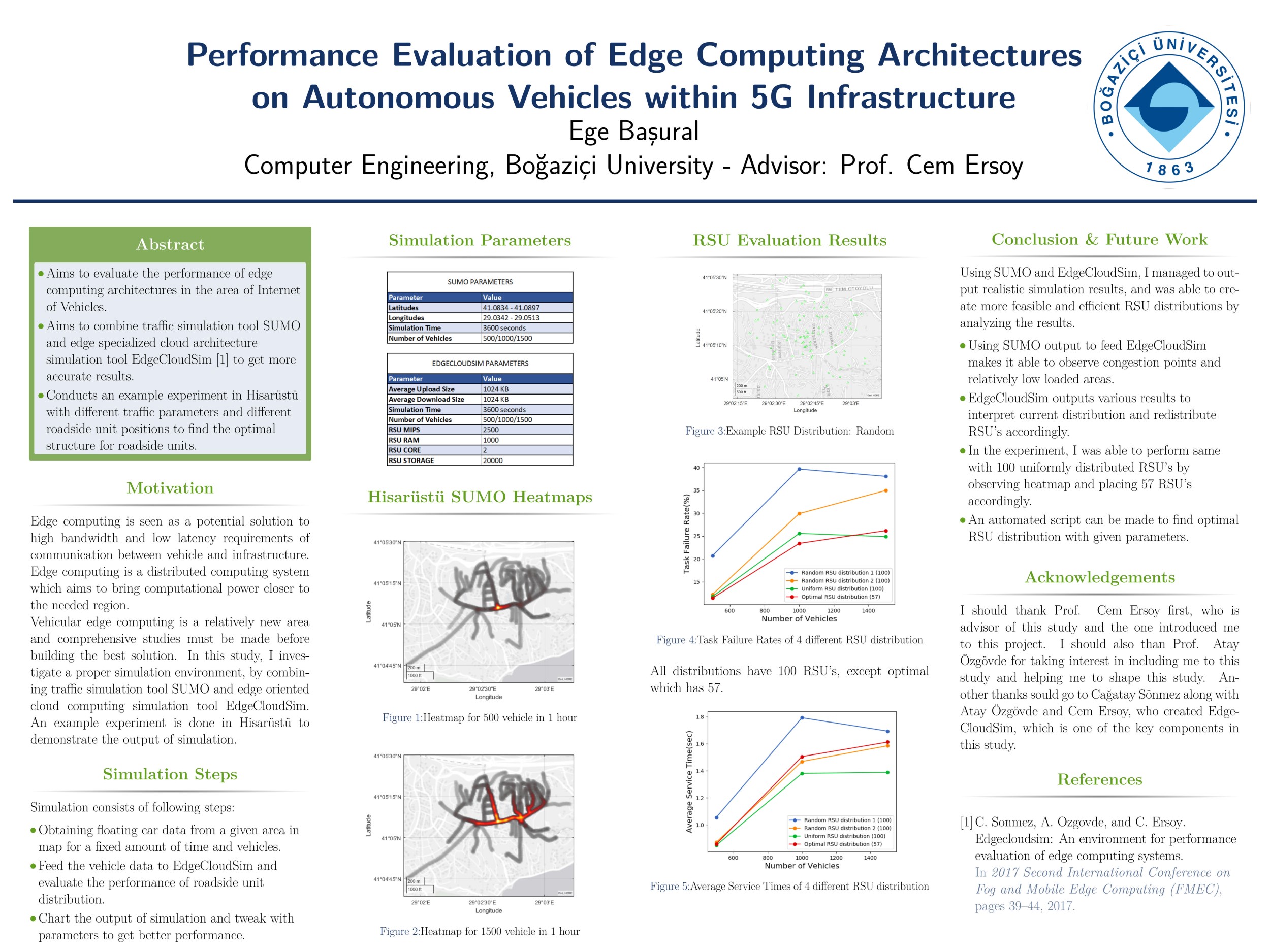Performance Evaluation of Edge Computing Architectures on Autonomous Vehicles within 5G Infrastructure
The idea of building a fully working autonomous vehicle is closely related to a proper working Internet of Vehicles.

The idea of building a fully working autonomous vehicle is closely related to a proper working Internet of Vehicles. The connected network of vehicles supplies an autonomous vehicle with knowledge far beyond a single car can obtain. As of today, the greatest challenge that is in the way of completely autonomous transportation systems seems to be the need of very low latency in vehicle-to-vehicle and vehicle-to-infrastructure communication. Vehicular edge computing structures are introduced to solve these problems. Further studies are continued to be made in vehicular edge computing systems and various communication protocols to simulate and evaluate the performance in both inter-vehicle and intra-vehicle communication. As accurate the simulation parameters are, as accurate the result of a study becomes. One key point in obtaining accurate results is to make these simulations with real traffic data. The aim of this study is to combine edge computing simulation tool EdgeCloudSim and traffic simulation tool SUMO to feed EdgeCloudSim with real traffic data from SUMO and conduct an example experiment for Hisarüstü to find the optimal road side unit numbers and positions during different traffic situations.
Poster: https://drive.google.com/file/d/1EjWawHj4k3MiAnfYSp7YOKMo7BtMF-Er/view?usp=sharing
Video: https://drive.google.com/file/d/1CrPYRAfc92eJK5eQIApTsLIGSpOGtF2W/view?usp=sharing